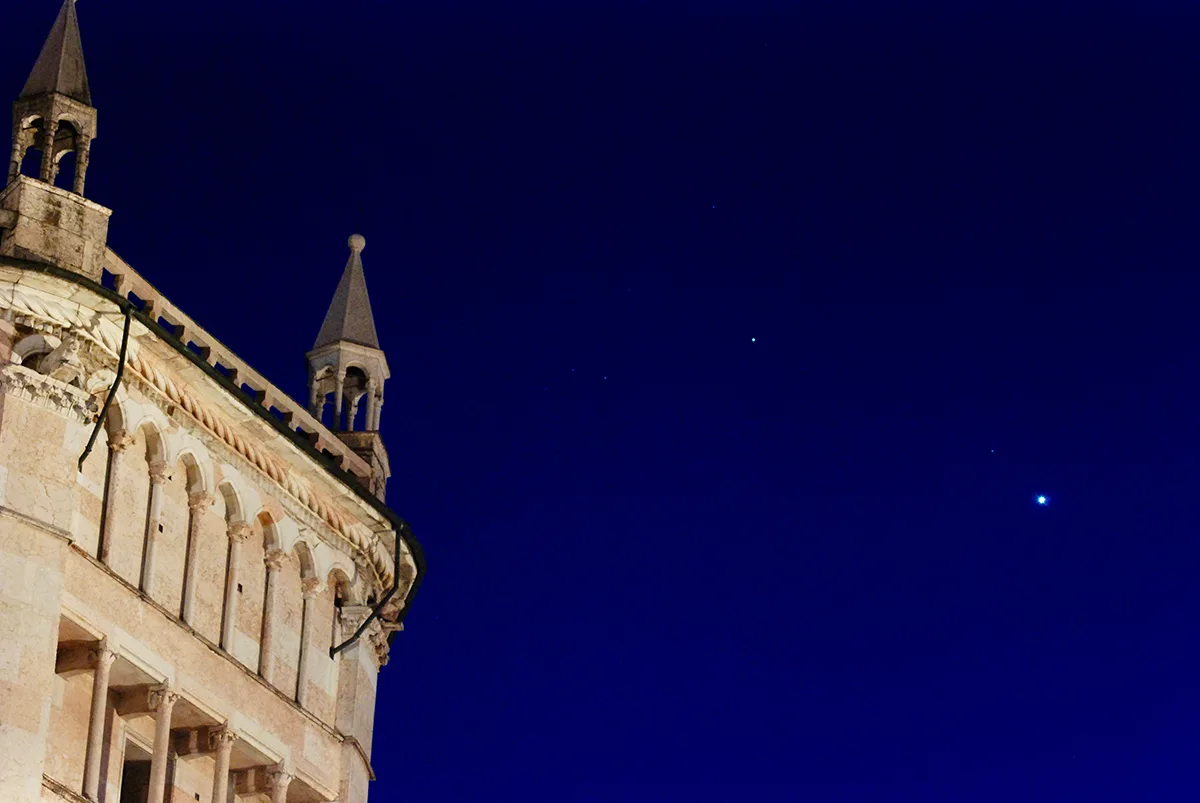Take the time to observe the planets over December and Christmas 2025 and you'll be in for a treat.
December and the run-up to Christmas is a great time to observe the night sky: it's dark, nights are long and the cold winter nights are a sign the festive period is on the way.
Stars, constellations and deep-sky objects appear cyclically in our night sky: they're reliably in the same location around the same time every year.

But not so, the planets.
Unlike the stars and constellations, the planets do not appear in the night sky at the same time every year.
So what planets can we expect to see in December and Christmas 2025? The bad news is that Mercury, Venus and Mars are not really visible.
Mercury is a morning object best seen at the start of December, low on the southeast horizon just before the Sun rises. But as December rolls on, it will get harder and harder to see.
Your best bet for observing the planets in December 2025 is the outer planets Jupiter, Saturn, Uranus and Mars.
Here's our run-down of what will be visible, and when.
For more info, read our guide on how to see the planets in December and our guide on how to find the planets in the night sky.
For regular stargazing advice throughout the year, sign up to receive the BBC Sky at Night Magazine e-newsletter or listen to our monthly Star Diary podcast.
Mercury

Mercury will be best seen at the start of the month, low in the southeast before sunrise.
A good time to see it will on the morning of Sunday 7 December, one hour before sunrise.
Hopefully Sunday morning will mean you can get out early and find a clear southwestern horizon to spot Mercury rising above the horizon.
It should rise about two hours before sunrise on this date, and will have brightened quite a bit, compared to what it was like at the start of December.
Mercury should remain visible for early risers until about 23 December, but it will get trickier to see as the month rolls on.
If you do attempt to see Mercury, be aware that it's rising in the same region of the sky as the Sun, and so caution must be taken.
As soon as the Sun begins to rise, stop observing.
Jupiter

Jupiter will be the best planet to observe during Christmas 2025.
It's shining brightly, easily seen with the naked eye and visible all night long. By around 9pm, it will be high in the east.
Jupiter is in the constellation Gemini, forming a triangle with Castor and Pollux, the twin stars.
It will reach a good height when due south, meaning it will be above Earth’s turbulent atmosphere, which means you'll get great, steady views through binoculars or a telescope.
if you're an early riser, head out just before sunrise and Jupiter will be visible in the west, with Castor and Pollux above it.
Pollux should be easily seen if you have a relatively dark sky, and if you're struggling to see Castor above it, close your eyes for about 10-20 seconds (provided it's safe to do so) to help your eyes dark adapt, then open them.
This should help bring Castor into view.
Observe it through your telescope and you'll see its iconic atmospheric belts and zones, its Galilean Moons and the Earth-sized cyclone known as the Great Red Spot.
Jupiter's view is only getting better. The planet is approaching opposition on 10 January 2026, which is the best time to see it.
Find out more with our guide on how to observe Jupiter.
Saturn

Saturn is another great planet to see during Christmas 2025, but is best seen at the start of the month.
On 1 December, Saturn is high in the sky under darkness, but by the end of the month it reaches peak altitude in twilight.
The ringed planet is visible in the south around 6.30pm, just below the beautiful Circlet star pattern in Pisces. See if you can spot all of the Circlet's stars.
And on Boxing Day, 26 December 2025, Saturn is joined by a beautiful crescent Moon.
For more info, read our guide on how to observe Saturn.
Uranus

Have you ever seen Uranus through a telescope? The ice giants Uranus and Neptune are probably the least observed by amateur astronomers, and have a reputation among beginners as being dauntingly tricky.
Like Saturn, Uranus is best seen at the start of the month, but it's still visible in the sky throughout the Christmas holiday.
It's south of the Pleiades star cluster in Taurus and to the right of the constellation's brightest star, Aldebaran.
This a good time to see whether it is indeed possible to see Uranus with the naked eye, as many stargazers claim it to be.
You'll need a clear, dark sky, good vision and time to let your eyes adapt to the dark.
Neptune

Neptune, the most distant Solar System planet from Earth, has a more daunting reputation than Uranus!
If you can spot Saturn, that's a good start for finding Neptune.
The planet is also best seen at the start of the month, but still visible over Christmas 2025.
It's just above and slightly to the left of Saturn, but you'll need at least binoculars, and preferably a telescope, to see it.
If you're observing or photographing the planets over Christmas 2025, share your images and experiences with us by emailing contactus@skyatnightmagazine.com

